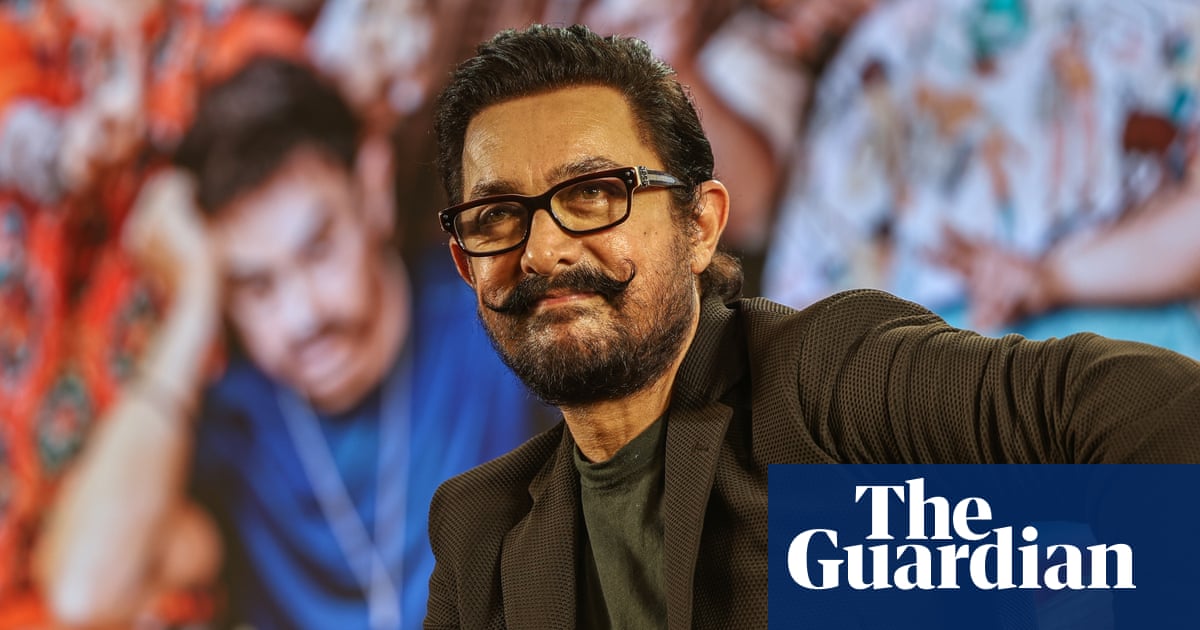About ten years ago, Aamir Khan became troubled. Despite being one of Bollywood’s most bankable superstars for more than three decades, he realised that only tiny numbers of Indians were watching him on the big screen.
Indian cinema is widely adored and has an outsized influence on society but just 2-3% of its 1.4 billion people go to the cinema.
One longstanding problem is access, in particular in rural areas. Khan, who has starred in, directed and produced celebrated films including Lagaan, 3 Idiots and Taare Zameen Par, spent years trying to develop a plan to build thousands of low-cost cinemas in India’s rural hinterland where films could be beamed in via satellite. However, the initiative was stymied by relentless bureaucracy.
Cost, too, has become a big obstacle. In the past, going to the cinema was a vibrant, often rowdy communal affair, where families would pack out single-screen cinemas amid cheering, dancing and whistling, with tickets costing just a few rupees. But as multiplexes have come to dominate in India, it has become a luxury experience. Tickets now regularly cost upwards of 500 rupees (£4.30) – unaffordable to most families in India.
“When my first film came out the cinema tickets were 10 rupees and whole families from all classes could afford to come [and] pack out cinema halls,” said Khan, 60. “But the reality is that theatres are no longer a mass medium, it’s become an upper-class medium. And as film-makers, we haven’t done enough to change that and reach that other 97% of the population.”
Instead, he said people had found other ways to watch films: either waiting for them to come on to satellite television or watching grainy pirated versions on their phones.
This week, however, Khan presented what he promised would be the solution – or what he described as the “future for Indian cinema”. After a traditional cinematic run, his latest release, Sitaare Zameen Par (Stars on Earth), will be made available for audiences exclusively on YouTube for just 100 rupees, the equivalent of less than £1. Other films in his back catalogue and future releases will follow.
His choice of YouTube, known more as a place to watch trailers than full movies, was deliberate. Of all entertainment platforms, YouTube’s reach in India – with 491 million users – far outstretches other traditional streaming services such as Netflix, which has about 12 million subscribers in India. It was, said Khan, “an absolute no-brainer when you consider the reach it has”.
“Internet penetration in India is now huge so you don’t need physical theatres to reach an audience any more,” Khan said. “I believe this is the model that will reach out to the maximum number of people and also serve the film industry’s creative community. Of course, the first place for our films should always be theatres. But then they should be available to the bulk of the country at an affordable price.”
Khan said he would always prefer people to watch his films on the big screen but the reality was that theatres were not catering to the audience he wanted to reach.
He said: “The idea with this is that 100 rupees would be paid by a whole family to watch the film together, maybe with their neighbours as well, so the cost per head would be very low.”
Khan’s decision to offer an alternative is also a response to the detrimental role he believes streaming has played in the crisis being faced by Indian cinema.
after newsletter promotion
Rather than boosting audiences, streaming had proved “counterproductive” and had led to the “cannibalisation” of Indian cinema, where films barely had a chance to be seen at theatres before they became absorbed on a platform alongside millions of others.
“Right now I feel that cinema is going through a rough time and I’m doing what I can to put back life into it,” said Khan.
The industry’s turmoil has not been restricted to a flailing box office. Over the past decade, since right-wing Hindu nationalist politics have come to dominate India, film-makers have accused India’s film censors of being draconian and blocking anything politically contentious.
Bollywood’s biggest male stars – Khan, Shah Rukh Khan and Salman Khan, often referred to as the “trinity of Khans” – are all Muslim and have been targeted by nationalists, who have mobilised hate campaigns and boycotts of their films and accused them of being “anti-India”. Khan continues to be haunted by comments he made a decade ago, stating that he felt unsafe amid “rising intolerance”, which prompted protests.
Khan acknowledged that many in the industry felt their creative instincts were being curbed by people in positions of strength who know very little about mass communication. “They feel they don’t have the freedom to say things the way they want to and how they want to,” he said.
But Khan said censorship and other pressures faced by Indian cinema were nothing new and dated back to the 1940s. “Every society has a certain percentage of people who are negative in their outlook and that is not going to disappear.”
Despite entertaining thoughts of retirement – as well as a brief period during the pandemic when he “secretly retired for six months” – Khan said he remained excited by the possibilities of cinema in India. “I’m really hopeful this new model will work,” he said. “If it doesn’t, we’re all in trouble.”
